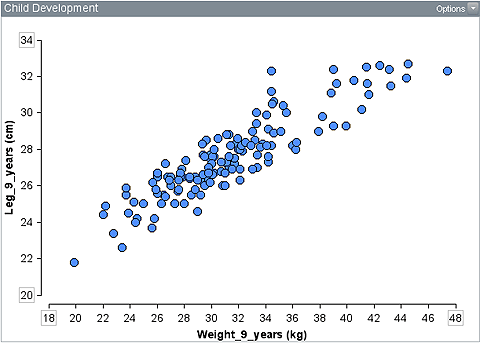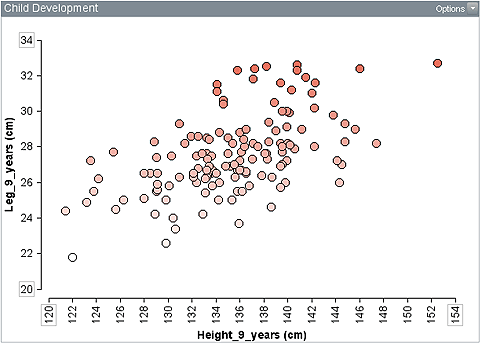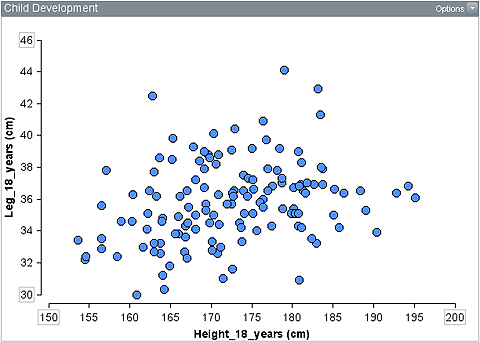Home > Statistics > Misunderstandings > Difficulties with informal inference > Is there an association?
Is there an association?
Students need to develop their intuitions about the strength of associations between two variables.
The following three scatter plots (representing a random sample from a population) show different degrees of association for two variables. Each is accompanied by an intuitive comment on the degree of association.
There is a strong positive association between the weight and length of leg for nine-year-old children.
There is a moderate association between the height and length of leg for nine-year-old children.
There is a weak positive correlation between the height and leg length of eighteen-year-olds.
The spread of the data is seen to increase as the association becomes weaker.
Some teaching advice on strength of associations and an activity on judging associations are provided.



